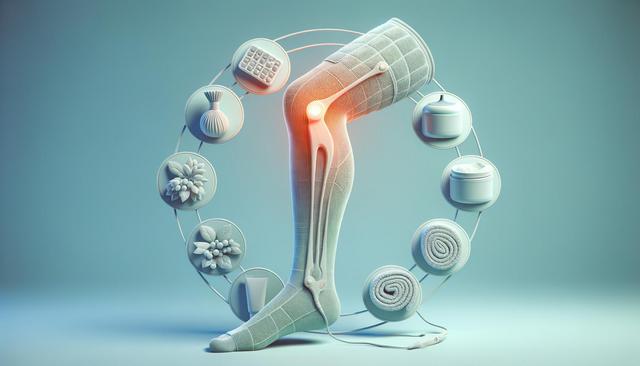Understanding the Connection Between Leg Pain and Circulatory Health
Leg pain may arise from various causes, but when it’s persistent and worsens with activity, it could be linked to a vascular condition known as peripheral artery disease (PAD). Recognizing the early warning signs of peripheral artery disease in legs is crucial to preventing more serious complications. PAD occurs when arteries that supply blood to the limbs become narrowed or blocked due to plaque buildup. This restriction in blood flow can lead to discomfort, mobility issues, and, in severe cases, tissue damage. The early signs of PAD may include leg numbness, cramping during walking, or cold sensations in the feet and toes. These symptoms are often overlooked or mistaken for aging or muscle fatigue, which delays appropriate care.
Understanding the root causes of peripheral artery disease can help individuals take proactive steps toward treatment and prevention. Common contributors include smoking, diabetes, high blood pressure, high cholesterol, and obesity. People over the age of 50, especially those with a history of cardiovascular issues, are at increased risk. By identifying these risk factors early, healthcare providers can tailor strategies to slow disease progression and minimize symptoms.
Recognizing the Early Signs of PAD
The early signs of PAD often appear subtly and may be mistaken for other less serious conditions. However, prompt attention to these signs can make a significant difference in treatment outcomes. Some of the early warning signs of peripheral artery disease in legs include:
- Intermittent claudication: Pain or cramping in the legs during walking or exercise that disappears with rest.
- Coldness in the lower leg or foot, especially when compared to the other side.
- Changes in skin color or shiny skin on the legs.
- Foot pain due to poor circulation, particularly at night or when legs are elevated.
- Sores on the toes, feet, or legs that heal slowly or not at all.
These symptoms can worsen over time if left untreated, potentially leading to critical limb ischemia or even amputation in extreme cases. That’s why it’s essential not to ignore early signs of PAD and to seek medical evaluation if symptoms persist.
Causes and Risk Factors of Peripheral Artery Disease
Peripheral artery disease is primarily caused by atherosclerosis, a condition where fatty deposits build up on artery walls, narrowing the blood vessels and reducing circulation. However, a range of other health issues and lifestyle choices can also influence the development of PAD. Key causes of peripheral artery disease include:
- Smoking, which damages blood vessels and accelerates plaque buildup.
- Diabetes, which affects blood sugar levels and vascular health.
- High cholesterol and high blood pressure, both of which strain arteries.
- Inflammation and sedentary lifestyle, which reduce circulation efficiency.
Understanding these contributors is essential for effective prevention and management strategies. Addressing these underlying issues through lifestyle changes and medical treatments can significantly reduce the risk of progression and improve overall leg health.
Available Peripheral Artery Disease Treatments
There are several peripheral artery disease treatments available today that can help manage symptoms and improve quality of life. The treatment approach usually depends on the severity of the condition and the patient’s overall health. Options range from conservative management to more advanced interventions. Common treatment strategies include:
- Lifestyle modifications, such as quitting smoking, adopting a healthy diet, and engaging in regular physical activity.
- Medications to lower blood pressure, cholesterol, or prevent blood clots.
- Supervised exercise therapy to improve walking distance and reduce leg pain.
- Minimally invasive procedures like angioplasty to restore blood flow.
- Surgical interventions such as bypass grafting in more severe cases.
Choosing the right treatment often involves a comprehensive assessment by a healthcare provider, including tests to evaluate blood flow and vascular health. Early intervention allows for less invasive treatments and better long-term outcomes.
Improving Circulation and Managing Symptoms at Home
For individuals seeking to manage PAD symptoms and improve vascular health on a daily basis, there are several steps that can support better circulation. Learning how to improve blood flow in legs is essential for reducing discomfort and avoiding complications associated with PAD. Here are some practical strategies:
- Engage in regular low-impact exercises such as walking, swimming, or cycling to encourage blood flow.
- Elevate your legs periodically to decrease swelling and improve venous return.
- Wear compression garments if recommended by a healthcare provider.
- Stay hydrated and avoid prolonged periods of sitting or standing.
- Monitor blood sugar and cholesterol levels closely, especially for individuals with diabetes or high cholesterol.
Additionally, maintaining a healthy weight and following a heart-friendly diet can support vascular function. These home-based strategies, when combined with professional medical care, form a well-rounded approach to living with PAD.
Conclusion: Taking the First Step Toward Healthier Legs
Leg pain, particularly when linked to poor circulation, should not be ignored. Recognizing the early signs of PAD and understanding the causes of peripheral artery disease are essential for timely treatment and improved outcomes. With a combination of medical care and lifestyle adjustments, individuals can effectively manage the condition and prevent complications. Whether dealing with foot pain due to poor circulation or seeking guidance on how to improve blood flow in legs, early and informed action is key. If you or a loved one experience symptoms that suggest PAD, consult a healthcare provider to explore peripheral artery disease treatments that fit your specific needs and health goals.




Leave a Reply